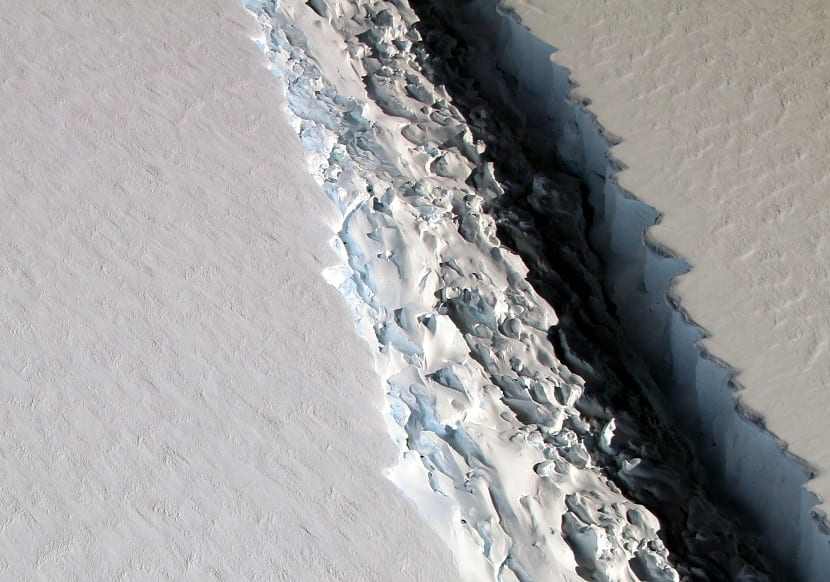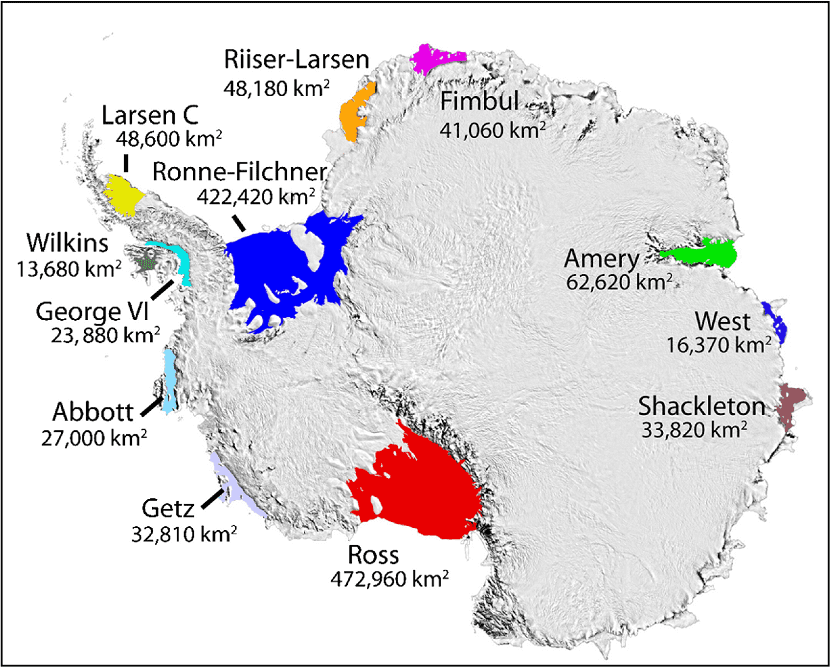
As mentioned in other articles, the stability of Antarctica is vital to the planet's climate. With global warming, the average temperatures of the entire planet are increasing, with the consequent effect of the melting of the polar caps, both of the North Pole and of the frozen continent.
Just a few days ago, a large block of ice in Antarctica cracked due to rising temperatures. The block is about 5.000 square kilometers in area and sits on the Larsen C ice shelf. The severity of the detachment of this block is that, due to its size, it could change the map of the southern hemisphere forever.
Detachment of the block at Larsen C

In order to mention the seriousness of the matter, we first refer to the two perception scales of this event: the human and geological scale. For the first stop, this detachment and this shift begins to steer Antarctica towards ruin in slow motion. However, on a geological scale, this is happening in a single blink of an eye.
For more than 30 years it has been warned that the western part of Antarctica has started to melt. Aside from rising global temperatures induced by climate change, most of the hole in the ozone layer is also found over Antarctica. These factors are causing Antarctica to melt by leaps and bounds.
The gigantic block called Larsen C is detaching and separating from the rest of the ice shelf and this may be the precursor to the collapse of the frozen continent. If the Larsen C block were to be completely detached, a large number of coastal cities around the world would be flooded. The edges of the Larsen C block are melting at a rapid rate, as if they were the walls of a sand castle. Inside there are scars that cause cracks so large that they reach 400 square meters.
An indicator of the warming of the Antarctic areas has been the water of the Amundsen Sea. In the last decades has heated more than 0,5 ° C, and this causes an increase in the rate at which the ice is melting and fracturing. Between 2015 and 2016, a large block of ice of about 360 square kilometers broke away, moving away from the sea coast. The predictions for the increase in temperature, in this case for the Wenddell Sea adjacent to Larsen C, average 5 ° C. This is the reason why many of the smaller ice shelves are completely melting.
If this continues, the Larscen C block will become the largest iceberg in history. It would have a surface similar to the Autonomous Community of Cantabria.
Midas project

The Midas project has been developed by a joint research team from the Universities of Swansea and Aberystwyth. The project has studied and concluded that due to the impact generated by the crack in the block, the separation of the iceberg is expected to occur very soon. When they speak suddenly, they are saying that it is a matter of weeks, since the crack has already taken a 90 ° turn and this normally leads to fracture.
The importance of the fracture
The importance of the Larsen C ice block fracture is that the ice that is about to break off is settled on a series of islands. However, the rest of the ice shelf is located over a basin that is about 5.000 km deep and this makes it vulnerable to rising ocean temperatures. So if the Larsen C ice block melts and falls off it can accelerate the melting of the rest of the shelf and at the rate they are doing so, It would raise the sea level by three meters, flooding entire cities around the world.
The Earth is warning us of the consequences of global warming and the detachment of the Larsen C block is just a small warning.
